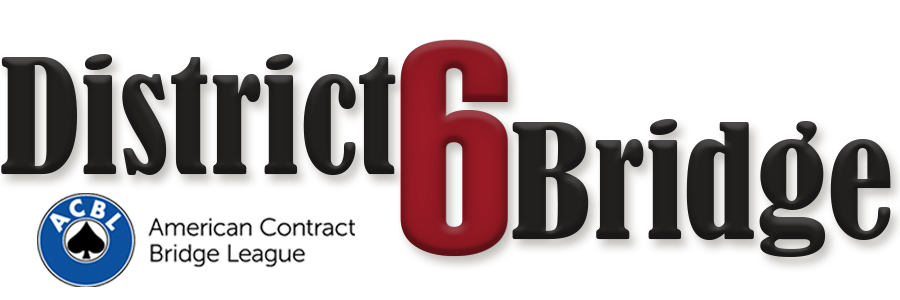I asked my expert panel— You open 1NT, partner bids 2 and the next player doubles. What’s the difference between Pass and 2? Does two-of-a-major say anything about your club stopper? Does redouble have any other meaning other than you have very good clubs?
The panel is split on what to do with a club stopper. The following experts play pass denies a club stopper. The disadvantage of passing with a four-card major and two small clubs is when LHO has four clubs and some distribution and bumps the auction to the four-level. The advantage is that if Responder has the King of clubs, he could possibly play the hand protecting the king. This would be good if this is a slam hand. Some partnerships actually go out of their way to get Responder to play the hand after Opener denies a club stopper. However, creating a system which transfers to Responder is probably a waste of brain power.
Chip Martel—I like Pass to deny a club stopper and then redouble re-asks, bids are normal but with a stopper. Redouble is an offer to play there.
Dan Morse—Pass shows no club stopper, partner can redouble to continue Stayman or bid a suit to play. With stopper bid normally.
Barry Rigal—Pass with no stopper. All other bids show a club stopper. After you pass redouble by responder is Re-Stayman with transfers. You can redouble 2 as opener as a suggestion to play, pass then pass the redouble with five decent clubs
George Jacobs—Pass denies a club stopper. All bids promise one. Redouble is an attempt to play.
Kit Woolsey—I play pass denies a club stopper and partner can redouble to Re-Stayman if he wishes. With stopper, make bid you would have made if no double. Direct redouble is an offer to play.
Joel Wooldridge—Bidding directly shows a club stopper, and passing first denies a club stopper. Bidding 2 says you have a club stopper and a hand that isn’t strongly interested in playing 2 redoubled which is fewer than four clubs with three winners or five clubs. Bidding two-of-a-major shows four cards and a stopper. Redouble is very good clubs.
After pass which denies a stopper, redouble by Responder is re-Stayman with either flip-flop or transfer responses to keep the stronger club holding on play. Responder bids 2, 2 or 2 instead of Re-Stayman as normal meanings. 2 is pass or correct, same with 2, 2 is whatever a Stayman followed by 2 would’ve meant.
Bobby Levin—Pass shows no club stopper, bids show a club stopper.
Alan Sontag—David Berkowitz and I respond naturally with a stopper and pass without one. Responder can bid reverse Smolen to declare.
Jon Wittes—Ross Grabel and I play pass denies a stopper. If you respond to the 2- bid, you show a stopper. Redouble shows at least a good four-card club suit. If you pass, partner can reopen his Stayman query by redoubling.
Mark Lair—Pass denies a club stopper. Partner will subsequently redouble to Re-Stayman and I will then bid the opposite major as to allow partner to play the hand with the king of clubs. 2 denies a major with a club stopper. Redouble is increasing the penalty for a loose lead-directing double.
Bill Pollack—Pass denies a stopper. After partner’s redouble which is asking, 2 shows Spades, 2 shows hearts, and 2NT shows both since partner might have a stopper. Two-of-a-major is that major with a stopper; 2 is no major, with a stopper. Redouble is an attempt to play in clubs. Similar methods over 3-Puppet.
Steve Landen—Redouble suggest playing 2 redoubled. Pass denies club stopper–then partner redoubles to force opener to respond to Stayman. No smolen
Smolen is if you’re 5-4 in the majors and partner bids 2 denying a major, you jump in your four-card major which will allow Opener to play the hand when he has three-card support for your five-card major. However, if it’s Responder with the possible club stopper, then you jump in your five-card suit so Responder can play the hand. There is a cost on making the notrump opener the dummy. The last time I un-transferred a transfer, Opener’s hand contained a weak suit and a strong one. It was easy for the defenders to attack the weak suit. It was much harder with the notrump opener’s hand concealed.
Danny Gerstman—Many people play if they bid they have a stopper and pass to deny one, period. 2 by responder is an attempt to play there. 2 is the follow up as if it went 2 — 2 –2 which is pass or correct. Only redouble is forcing and it re-asks the Stayman question. Opener bids the major he doesn’t have or bids 3 with both. But absent any agreements, I’d bid a major if I had one or else redouble with great clubs and bid 2 with at least two more diamonds than clubs and otherwise pass.
John Mohan—Most play that pass denies a stopper. Then 2 should show five-card suit and stopper; if partner was intending “garbage Stayman since 2 might be best spot.
The following experts play the pass shows a stopper. If you have a club stopper, it’s less likely that the opponents will preempt the auction.
Drew Cason—Jim and I play that pass shows a stopper and bidding denies a stopper.
Although this often gets us wrong sided, it makes the auctions simple. Responder redoubles to ‘continue’ the auction. If responder doesn’t redouble, he is weak and just wants to get out. Redouble by opener is BUSINESS
Mildred Breed—I play that bidding 2, 2 or 2 denies club stopper and passing shows club stopper. If opener passes, Stayman bidder can redouble to say continue on. Redouble by opener is to play.
Charles Weed—I play pass shows club stopper and any other bid denies a club stopper. Responder can restart Stayman after my pass with redouble. Redouble of 2 = clubs.
Marinesa Letizia—Pass shows a club stopper for notrump, then redouble by 2-bidder is Re-Stayman. Bidding immediately denies a club stopper for notrump. Redouble is just standard old good clubs, attempt to play,
Chuck Berger—Pass shows a stopper. Any bid denies a club stopper. Responder can Re-Staymen, use Smolen, or just bid a suit. Redouble shows four plus clubs and two plus stoppers.
Richie Schwartz—Pass shows a stopper and forces redouble with any kind of invitational or better hand. If Responder bids straight away he is weaker. Bidding and ignoring double denies a stopper. Redouble is let’s play 2 redoubled.
Larry Cohen—This is what I played with David Berkowitz. Redouble was business. Everything else was a version of Lebensohl. Direct answers deny a stopper. Pass show clubs stopped. After the pass the 2 bidder can redouble to repeat the inquiry.
Jeff Rubens—My personal preference is strongly colored by my strong dislike of so-called Garbage Stayman–so 2 always shows at least game-invitational strength. Over the double, my actions relate to clubs: redouble very strong (usually four strong ones), pass moderate (typically three to a high honor), bidding shows weak clubs. Most often stopper-less doubleton; so 2 shows weak clubs and no major. Of course, every club holding must be put in one of the three categories, and not all are typical; a good strategy is to show weaker clubs than you might when not sure, because the doubler often has a side entry at notrump.
The following experts keep it simple. Pass shows a club stopper as well as denying a four-card major. 2 denies a four-card major as well as a stopper. Playing this method, redouble by Responder can mean that he has four good clubs and that the doubler has made an error.
Eddie Kantar—I play that pass shows a club stopper, but not strong enough clubs to redouble.
Unless my clubs are strong enough to redouble, I show the four-card major. 2 denies a club stopper as well as a four-card major. Redouble shows good clubs and willingness to play, generally five clubs.
Bobby Wolff—Bidding 2 should show good diamonds and at best a 1/2 club stop, for instance Qxx and, of course, no four-card major. You should bid a four-card major, hearts first, if both since it is possible that, if you do not you will not get another chance at a decent level. Redouble should show very good clubs KQ109 at a very minimum and usually five of them, not, of course Jxxxx, but pretty good KJ8xx, and has the priority ahead of other options, especially if you are playing against aggressive opponents who take more chances to get what appears to them to be the right opening lead.
Henry Bethe—Pass and redouble = willingness/desire to play. Bidding generally shows short clubs with no stopper implications.
Nick Nickell—According to methods that Richard Freeman and I developed, Ralph Katz and I play that 2 is five-card suit, two-of-a-major shows four, and pass and redouble are oriented to punish them as opposed to showing or denying stoppers. 2 redoubled can be a very attractive score.
Larry Mori—Partnerships need an agreement of whether pass or bidding shows a club stopper. In either case, redouble by responder is Re-Stayman. That would make moot the 2 in many situations other than to say he has no four-card major with or without a club stopper depending on the agreement. Redouble would be very good clubs unless we want to ascribe a different meaning to it and not have the possibility of a 2 redoubled contract. We have to define the minimum for a redouble if shows good clubs such as AQ108 if a four-bagger and otherwise a five-bagger that is good but does not have to be that good, KQ108x or even a little less.
Kathie Wei-Sender—Over 2 doubled, pass denies a major. Redouble is to play it there 2 is natural.I like the following.
Steve Bloom—I’m pretty old-school here. Redouble suggests playing there. Pass is willing to play in 2 redoubled if partner opts for that. Other calls are normal, with 2 mostly natural (with no major and no diamond suit, I have long clubs, and so would pass or redouble).
There is a modern approach in vogue today, where pass denies a club stopper, and other bids promise a stopper. I don’t get it. Doesn’t the auction ever go 1NT – Pass – 2 – Dbl – Pass (3)? or (4)? Partner asked for my major, and the auction may be turning competitive. I have to tell partner about my majors! This is a fundamental principle of competitive bidding. You can’t throw a whole bunch of hand-types into a pass, and hope to sort them out later. We need to find our fit first, and worry about stoppers later.
In contrast, consider the auction 1NT – Pass — 2 — Dbl. Here, it makes quite a lot of sense to use a gadget to show a fit with no stopper or an anti-positional stopper. Then partner, with a vulnerable diamond holding, can become declarer.
Maybe over a four-level transfer, deciding which side plays the hand makes sense.
I like simple. If you have a four-card major you bid it. If you don’t have a four-card major pass with a stopper and bid 2 without one. Everyone plays redouble shows very good clubs and you hope to make 2 redoubled with overtricks.

